Welcome to #HardWaterHacks where we debunk myths and provide practical tips for living with water that’s less softened or using softening alternatives to reduce chloride pollution. Each topic in the series has been researched through the personal experiences of District pollution prevention specialist Catherine Harris as she embraces our naturally mineral-rich area groundwater, works to change social norms on home salt use and reduces chloride pollution in natural systems.
Tips by Catherine Harris
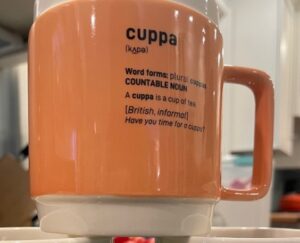
As a coffee lover and someone who lives with a Brit, many cups of tea and coffee are brewed in my household every day. For years, we’ve been battling the never-ending challenge of scale build-up in our electric kettles and coffee machines. If you live in the Madison area (or anywhere with hard water), you probably know exactly what I’m talking about. The white, powdery stuff that coats the inside of your kettle is scale, and it’s a constant companion when you’re boiling water or brewing your favorite hot drink.
But what if hard water isn’t something to fear but something we can learn to live with, and even embrace? Over time, I’ve discovered some surprisingly simple ways to maintain my coffee and tea makers without falling into the trap of fearing the inevitable scale. I’ll share what I’ve learned so far about living with hard water and how to make the most of it in your daily brew routine.
What is scale, anyway?
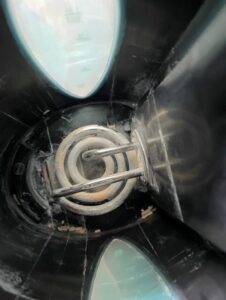
What exactly is ‘scale’ buildup and where does it come from? That white, crusty stuff that builds up in your kettle or coffee machine is mainly comprised of minerals like calcium and magnesium. Fortunately, it’s not harmful to your health. In fact, these minerals are beneficial to our bodies (many people even take calcium and magnesium supplements!)
The reason we have this mineral-rich water is that our groundwater comes from deep underground aquifers. As the water travels through rock formations, it picks up minerals, which then end up in our tap water. If you have a water softener, it will remove these minerals from your water, but most kitchens are plumbed so that they are not connected to the softener. Whether you have a water softener or not, your kitchen sink will likely still be delivering hard water. In fact, it’s quite common for water softeners to only be hooked up to parts of the house other than the kitchen—sorry, kitchen sink! Looks like the saying “everything but the kitchen sink” isn’t just a metaphor around here!
This means we get clean, mineral-rich water—but with the occasional problem of scale build-up in our appliances.
electric kettles And vinegar battles
If you’ve ever owned an electric kettle (especially one with a heating element like a curly wire), you know the drill. When scale forms with the usual white buildup, it’s time to brew or boil a pot of vinegar or descaling solution to clean the electric kettle. In our house, we’ve gone through this cycle countless times. Sometimes, after a few years, even the vinegar soaks can’t seem to remove the built-up scale, and we find ourselves replacing the kettle. Again.
Here’s the key discovery I’ve made: not all kettles are equal for handling hard water. The solution? A kettle with a flat bottom where the heating element is not directly exposed to the water. This design prevents scale from building up on the element as quickly. The flat-bottom kettle stays cleaner for longer and needs far less maintenance than the old curly-element models.
Many of the new kettles come with built-in mesh filters that catch fine scale particles, so you can enjoy a smooth brew without the little bits of mineral dust floating around in your mug. Or, you can try using a mineral catcher to help slow down scale buildup inside your kettle. As you can see in the photo below comparing a used vs. a new catcher, this little ball of twisted up wires does catch scale. However, based on how quickly scale builds up in the kettle, I’m not confident that using a catcher has made much of a difference.
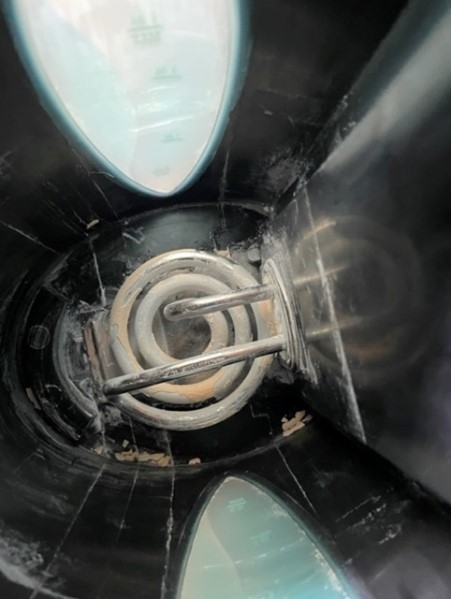
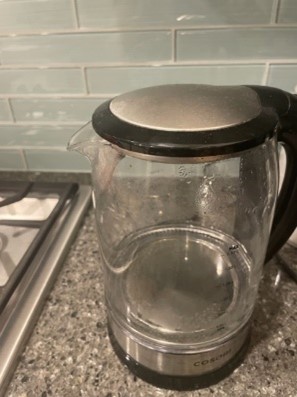
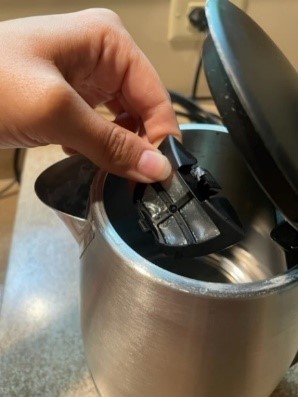


Coffee Machines: brewing with hard water
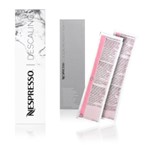
Drip coffee pots can also suffer a similar fate from time to time. They can get so full of scale that they take too long to brew a pot. Fortunately, most drip coffee makers can be descaled by running vinegar through a cycle.
I was nervous when I got a Nespresso machine as a gift, thinking that hard water could eventually clog up the machine and affect its performance. So, right away I made sure to check how to clean it. The manual warned never use vinegar for descaling. Luckily, Nespresso has thought ahead: they offer a special descaling kit, and some of their machines are even built to handle harder water.
Hard water and the perfect cup of coffee
Maintaining a machine is one thing, but then there was a question that still really bugged me: Does hard water make our coffee taste worse? After some deep research and trying out different water types, I discovered that water’s mineral content is pretty important for coffee flavor.
I did a little experiment brewing the same Nespresso pod three times with three different types of water: one with water from a reverse osmosis (R.O.) filter, one with standard filtered tap water and one with a blend. There wasn’t a huge visual difference in the crema (the lovely foam atop a freshly brewed espresso). But the taste? That’s where it got interesting. Surprisingly, the blind taste tasters (my friends and family!) slightly preferred the brew made with our regular tap water (hard water). They thought the coffee had more flavor.
Interestingly, some professional coffee brewers add minerals into their water to enhance flavor (think magnesium sulfate and calcium citrate). And, there are even products marketed for consumers to add minerals themselves!

Embracing hard water and loving the brew
In the end, hard water isn’t the villain we thought it might be. With a few tweaks—like switching to kettles and coffee machines designed to handle scale and embracing the natural minerals in our water—I’ve managed to enjoy our daily brew without fearing the scale. In fact, I’m starting to think that a little hard water might just be the secret to a better cup of tea and coffee.
So, the next time you see a little scale forming in your kettle or coffee maker, don’t panic. Instead, embrace the process, and let your hard water work its magic.






